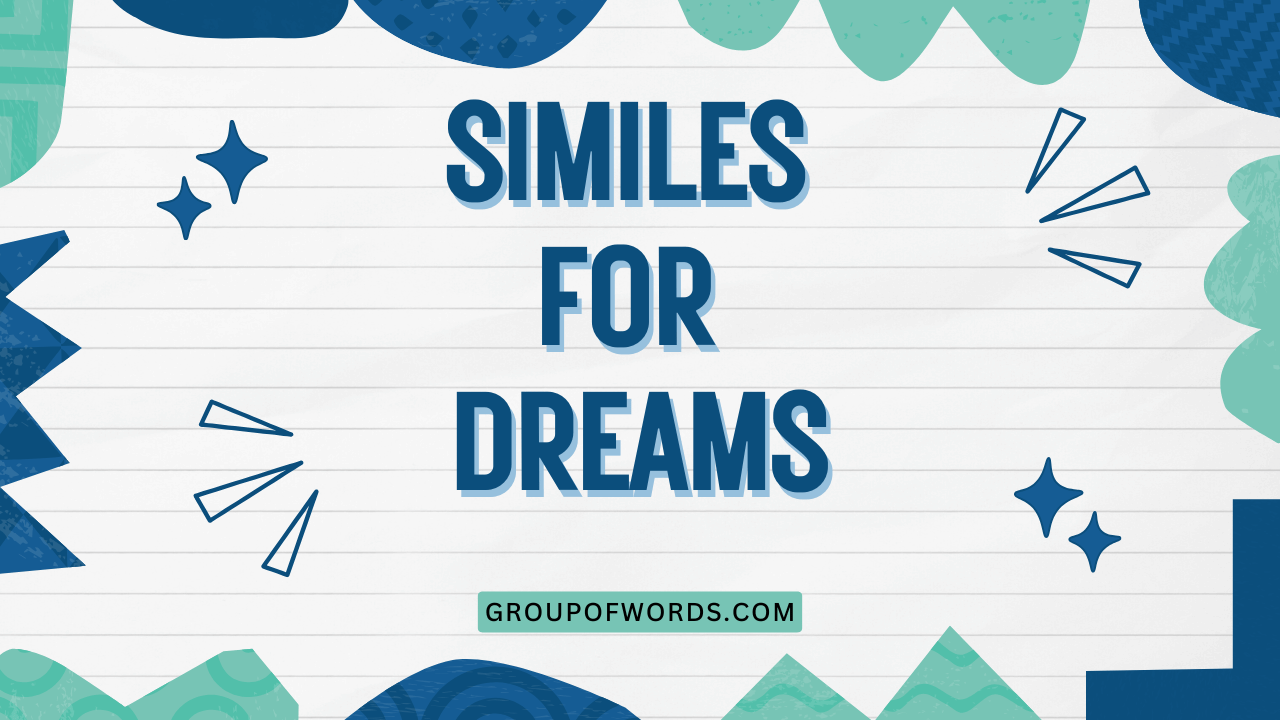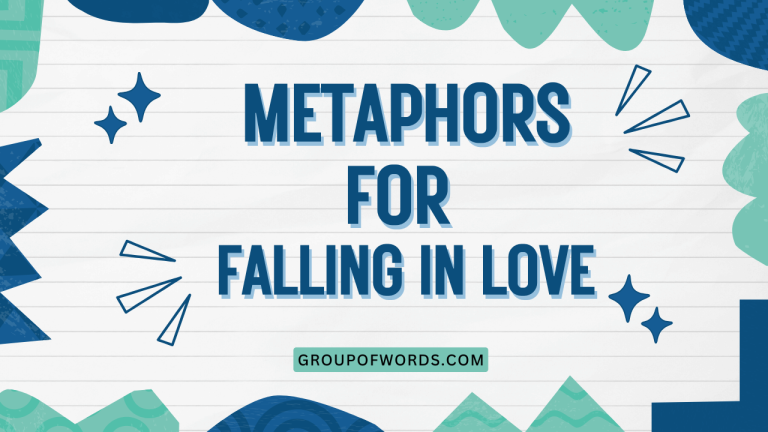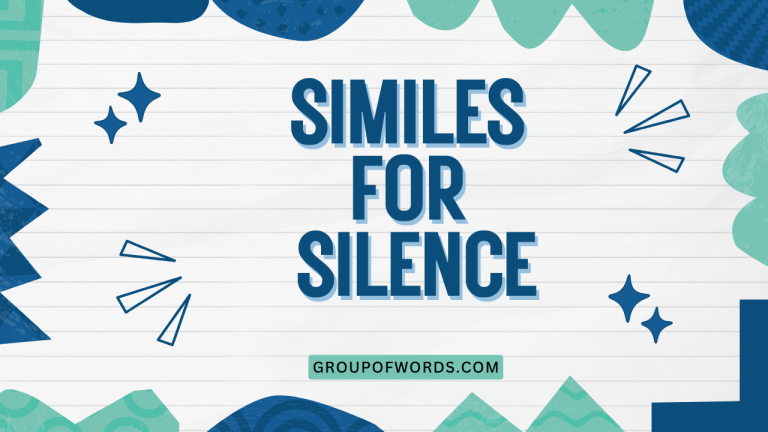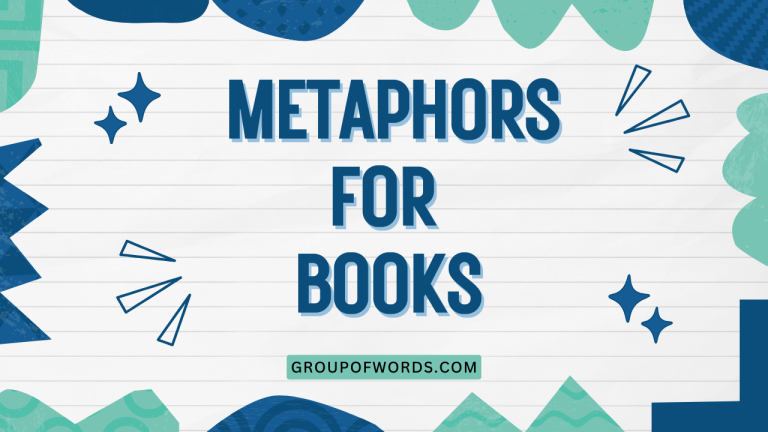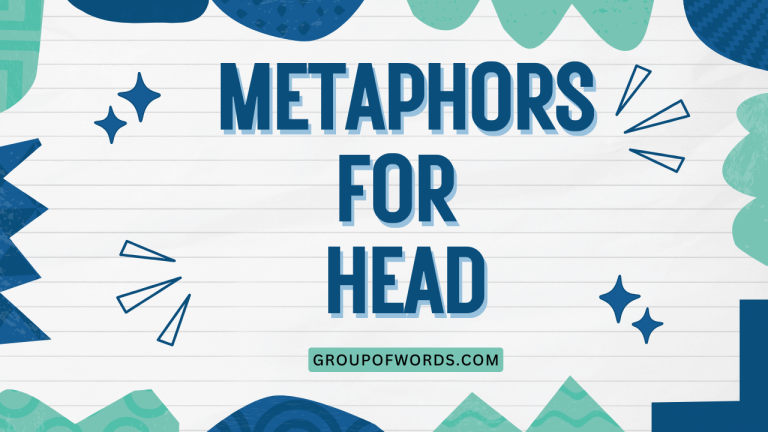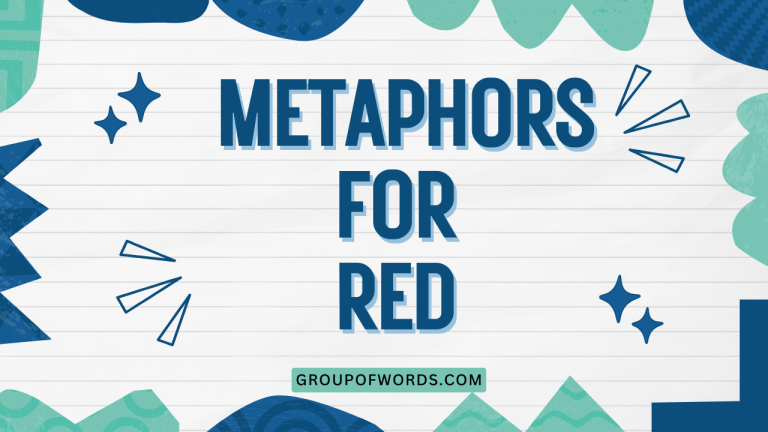Similes for Dreams: A Comprehensive Guide
Dreams, those enigmatic journeys our minds take us on while we sleep, are often difficult to articulate. Similes offer a powerful way to capture their elusive nature, allowing us to paint vivid pictures of the dream world.
Understanding how to use similes effectively can significantly enhance your descriptive writing and communication skills. This article will explore the art of crafting similes specifically for dreams, providing you with the knowledge and tools to describe your nocturnal adventures with accuracy and flair.
Whether you’re a student, writer, or simply someone fascinated by dreams, this guide will help you unlock the potential of similes to express the intangible.
This article is designed for English language learners of all levels, from beginners seeking to expand their vocabulary to advanced writers aiming to refine their descriptive abilities. By studying the examples, practicing the exercises, and understanding the nuances of simile construction, you will gain a deeper appreciation for the power of figurative language and its ability to illuminate the hidden landscapes of our minds.
Table of Contents
- Introduction
- Definition of Simile
- Structural Breakdown of Similes
- Types of Dream Similes
- Examples of Similes for Dreams
- Usage Rules for Similes
- Common Mistakes with Similes
- Practice Exercises
- Advanced Topics: Metaphors vs. Similes in Dream Interpretation
- Frequently Asked Questions
- Conclusion
Definition of Simile
A simile is a figure of speech that directly compares two different things using the words “like” or “as.” It’s a powerful tool for creating vivid imagery and enhancing understanding by relating an unfamiliar concept to something more familiar. Similes help readers or listeners visualize and connect with the subject matter on a deeper level, making descriptions more engaging and memorable.
In the context of dreams, similes allow us to articulate the often-bizarre and surreal experiences that defy literal description.
The primary function of a simile is to draw a parallel between two unlike entities, highlighting a shared characteristic or quality. This comparison is not meant to be taken literally but rather to evoke a specific feeling, image, or idea.
For example, saying “The dream was like a rollercoaster” doesn’t mean the dream literally had tracks and cars, but it conveys the feeling of intense ups and downs and a sense of exhilaration mixed with fear. Similes are essential in creative writing, poetry, and even everyday conversation, adding color and depth to our language.
Similes are used extensively in literature, poetry, and everyday speech to make descriptions more vivid and relatable. They help the audience understand complex or abstract ideas by comparing them to something familiar.
For instance, describing a dream as “as fleeting as a hummingbird’s wings” effectively communicates the dream’s ephemeral and elusive nature. Similes are particularly useful when describing subjective experiences, such as emotions or dreams, which are difficult to convey through literal language alone.
The effectiveness of a simile depends on the clarity and relevance of the comparison, ensuring that the audience can readily grasp the intended meaning.
Structural Breakdown of Similes
The basic structure of a simile consists of three core components: the subject being described, the linking word (“like” or “as”), and the object to which the subject is being compared. Understanding these components is crucial for constructing effective and meaningful similes.
The subject is the entity you are trying to describe. In the context of dreams, this could be the entire dream, a specific image within the dream, or a feeling experienced during the dream.
The linking word, either “like” or “as,” explicitly signals that a comparison is being made. The object is the point of reference, the thing that the subject is being compared to.
The object should be something familiar to the audience, allowing them to grasp the characteristics being attributed to the subject.
Here’s a breakdown of the structure:
- Subject: The dream
- Linking Word: Like/As
- Object: A rollercoaster
- Complete Simile: The dream was like a rollercoaster.
Let’s analyze the different structural possibilities using dreams:
- Using “like”: The dream was like a distant memory.
- Using “as”: The dream was as vivid as a photograph.
- Elaborated Simile: The dream, like a ship lost at sea, drifted aimlessly without a destination.
- Embedded Simile: I felt as if I were floating in a dream, as light as a feather.
The key to crafting effective similes lies in selecting an object that shares a relevant characteristic with the subject. The more precise and evocative the comparison, the more impactful the simile will be.
Types of Dream Similes
Dreams come in many forms, each with its unique characteristics and qualities. Therefore, similes used to describe dreams can be categorized based on the type of dream they are intended to capture.
Here are some common types of dream similes:
Similes for Vivid Dreams
Vivid dreams are characterized by their intensity, clarity, and realism. They often feel incredibly real, leaving a lasting impression on the dreamer.
Similes for vivid dreams typically emphasize their sensory details, emotional impact, and lifelike quality.
These similes often incorporate strong sensory imagery, such as vibrant colors, distinct sounds, and palpable textures. They also highlight the emotional intensity of the dream, conveying the sense of joy, fear, or excitement experienced during the dream.
The goal is to capture the dream’s immersive and captivating nature, making it feel real to the reader.
Similes for Nightmares
Nightmares are frightening dreams that evoke feelings of terror, anxiety, and helplessness. Similes for nightmares often focus on the themes of fear, danger, and oppression, using imagery that is dark, disturbing, and unsettling.
These similes frequently employ metaphors of entrapment, pursuit, and violence to convey the sense of threat and vulnerability experienced during the nightmare. They also emphasize the emotional distress caused by the dream, capturing the feelings of panic, dread, and despair.
The goal is to evoke the nightmare’s horrific and unsettling nature, making the reader feel the dreamer’s fear.
Similes for Abstract Dreams
Abstract dreams are characterized by their lack of coherence, logic, and narrative structure. They often feature bizarre imagery, disjointed scenes, and symbolic representations.
Similes for abstract dreams typically emphasize their surreal, illogical, and enigmatic nature.
These similes often use comparisons to abstract art, surrealist paintings, or nonsensical poems to convey the dream’s lack of clear meaning or purpose. They also highlight the dream’s disorienting and confusing qualities, capturing the feeling of being lost in a maze of symbols and metaphors.
The goal is to evoke the dream’s mysterious and incomprehensible nature, inviting the reader to interpret its hidden meanings.
Similes for Recurring Dreams
Recurring dreams are dreams that repeat themselves over time, often with the same themes, images, and emotions. Similes for recurring dreams typically emphasize their repetitive, familiar, and persistent nature.
These similes often use comparisons to repeating patterns, looping videos, or stuck records to convey the sense of déjà vu and inevitability associated with recurring dreams. They also highlight the emotional significance of the dream, suggesting that it may be related to unresolved issues or anxieties.
The goal is to evoke the dream’s persistent and haunting nature, inviting the reader to explore its underlying causes.
Similes for Lucid Dreams
Lucid dreams are dreams in which the dreamer is aware that they are dreaming and can often control the dream’s content and direction. Similes for lucid dreams typically emphasize their sense of awareness, control, and possibility.
These similes often use comparisons to virtual reality, video games, or creative writing to convey the sense of agency and freedom experienced during a lucid dream. They also highlight the dream’s potential for exploration, experimentation, and self-discovery.
The goal is to evoke the dream’s empowering and transformative nature, inspiring the reader to explore their own lucid dreaming abilities.
Examples of Similes for Dreams
Here are several examples of similes for dreams, categorized by the type of dream they describe. Each table includes a wide range of similes to illustrate the different ways you can use this figure of speech to capture the essence of dreams.
Similes for Vivid Dreams
The following table provides examples of similes that capture the intense, realistic, and sensory-rich nature of vivid dreams. These similes aim to convey the feeling of being fully immersed in a lifelike experience.
| Simile | Explanation |
|---|---|
| The dream was as real as waking life. | Emphasizes the indistinguishable quality between the dream and reality. |
| The colors in the dream were like a painter’s masterpiece. | Highlights the vibrant and artistic quality of the dream’s visuals. |
| The sounds of the dream were as crisp as a live concert. | Conveys the clarity and intensity of the dream’s auditory experience. |
| The dream felt like a tangible reality. | Suggests that the dream had a physical presence and impact. |
| The details in the dream were as sharp as a photograph. | Emphasizes the clarity and precision of the dream’s imagery. |
| The dream was like a movie playing in my head. | Compares the dream to a cinematic experience with a clear narrative. |
| The emotions in the dream were as intense as a real-life drama. | Highlights the strong emotional impact of the dream. |
| The dream was as clear as a perfectly still lake. | Illustrates the pristine and untroubled nature of the dream’s clarity. |
| The dream felt like a memory being relived. | Suggests that the dream was a vivid and familiar experience. |
| The dream was as immersive as a virtual reality simulation. | Emphasizes the all-encompassing and engaging nature of the dream. |
| The dream unfolded like an intricately woven tapestry. | Highlights the complex and detailed nature of the dream’s narrative. |
| The dream was as bright as a summer day. | Conveys the vivid and radiant quality of the dream’s atmosphere. |
| The dream felt like a journey through a foreign land. | Suggests that the dream was an exploration of new and unfamiliar territory. |
| The dream was as detailed as a hyperrealistic painting. | Emphasizes the meticulous and precise nature of the dream’s imagery. |
| The dream felt like a waking dream. | Highlights the dream’s indistinguishable quality from reality. |
| The dream was as poignant as a deeply moving story. | Conveys the emotional depth and resonance of the dream. |
| The dream’s atmosphere was as thick as pea soup. | Illustrates the dense and immersive nature of the dream environment. |
| The dream was as palpable as a physical sensation. | Emphasizes the tangible and real feeling of the dream experience. |
| The dream felt like a second life. | Suggests that the dream was a complete and immersive experience. |
| The dream was as striking as a bolt of lightning. | Highlights the sudden and powerful impact of the dream. |
| The dream was like watching a play unfold on a grand stage. | Compares the dream to a theatrical performance with a clear narrative and visual spectacle. |
| The tastes in the dream were as distinct as a gourmet meal. | Highlights the detailed and refined sensory experience of the dream. |
| The dream was as enchanting as a fairy tale. | Conveys the magical and captivating quality of the dream. |
| The dream felt like stepping into another dimension. | Suggests that the dream was a portal to a different reality. |
| The dream was as overwhelming as a sensory overload. | Emphasizes the intense and all-encompassing nature of the dream. |
| The dream was like reading a book where the words came alive. | Compares the dream to an immersive reading experience with vivid imagery. |
| The textures in the dream were as rich as velvet. | Highlights the tactile and luxurious quality of the dream’s sensory details. |
Similes for Nightmares
The following table contains similes that capture the terror, anxiety, and helplessness associated with nightmares. These similes focus on dark, disturbing, and unsettling imagery.
| Simile | Explanation |
|---|---|
| The nightmare was like being trapped in a dark maze. | Conveys the feeling of being lost and helpless in a frightening situation. |
| The fear in the nightmare was as cold as ice. | Highlights the chilling and paralyzing effect of the dream’s fear. |
| The nightmare felt like a relentless pursuit. | Suggests that the dreamer was being chased and threatened. |
| The darkness in the nightmare was as thick as ink. | Emphasizes the oppressive and suffocating nature of the dream’s darkness. |
| The nightmare was like a horror movie playing on repeat. | Compares the dream to a terrifying and inescapable film. |
| The anxiety in the nightmare was as sharp as a knife. | Highlights the intense and piercing nature of the dream’s anxiety. |
| The nightmare felt like drowning in a sea of fear. | Suggests that the dreamer was overwhelmed and suffocated by fear. |
| The shadows in the nightmare were as menacing as predators. | Emphasizes the threatening and dangerous nature of the dream’s shadows. |
| The nightmare was like a descent into madness. | Compares the dream to a terrifying and disorienting experience. |
| The helplessness in the nightmare was as heavy as lead. | Highlights the overwhelming and immobilizing feeling of powerlessness. |
| The nightmare felt like being buried alive. | Suggests that the dreamer was trapped and suffocated. |
| The nightmare was as suffocating as a closed coffin. | Illustrates the feeling of being trapped and unable to escape. |
| The fear was as paralyzing as being face to face with a monster. | Emphasizes the immobilizing effect of extreme fear. |
| The nightmare was like a twisted version of reality. | Compares the dream to a distorted and frightening world. |
| The dread in the nightmare was as pervasive as a disease. | Highlights the all-encompassing and insidious nature of the dream’s dread. |
| The nightmare felt like a never-ending fall. | Suggests that the dreamer was constantly descending into fear and despair. |
| The silence in the nightmare was as deafening as an explosion. | Emphasizes the unnerving and unsettling nature of the dream’s silence. |
| The nightmare was like a distorted reflection in a shattered mirror. | Compares the dream to a fragmented and disturbing image. |
| The terror in the nightmare was as consuming as a fire. | Highlights the overwhelming and destructive nature of the dream’s terror. |
| The nightmare felt like being hunted by an invisible force. | Suggests that the dreamer was being pursued by an unseen and malevolent entity. |
| The nightmare’s grip was as tenacious as a vise. | Highlights the firm and inescapable hold of the dream’s fear. |
| The nightmare was as relentless as a ticking time bomb. | Compares the dream to a constant and growing sense of impending doom. |
| The feeling of being watched was as unsettling as eyes in the dark. | Emphasizes the unnerving and paranoid sensation of being observed. |
| The nightmare was like a personal hell. | Compares the dream to a tormenting and inescapable experience. |
| The echoes in the nightmare were as chilling as whispers from the grave. | Highlights the eerie and unsettling nature of the dream’s auditory experience. |
| The nightmare felt like a curse come to life. | Suggests that the dreamer was experiencing a supernatural and malevolent force. |
| The oppressive atmosphere was as thick as a shroud. | Emphasizes the suffocating and deathly quality of the dream’s environment. |
Similes for Abstract Dreams
The table below offers similes to describe the surreal, illogical, and enigmatic nature of abstract dreams. These similes aim to capture the feeling of being lost in a world of symbols and metaphors.
| Simile | Explanation |
|---|---|
| The dream was like a surrealist painting come to life. | Compares the dream to an artistic representation of the subconscious mind. |
| The logic of the dream was as twisted as a Möbius strip. | Highlights the paradoxical and illogical nature of the dream’s reasoning. |
| The dream felt like navigating a labyrinth of symbols. | Suggests that the dreamer was trying to decipher hidden meanings. |
| The images in the dream were as disjointed as a collage. | Emphasizes the fragmented and disconnected nature of the dream’s visuals. |
| The dream was like a nonsensical poem. | Compares the dream to a literary work that defies clear interpretation. |
| The meaning of the dream was as elusive as a mirage. | Highlights the difficulty in understanding the dream’s message. |
| The dream felt like wandering through a gallery of the absurd. | Suggests that the dreamer was encountering bizarre and illogical scenarios. |
| The connections in the dream were as tenuous as spiderwebs. | Emphasizes the fragile and easily broken links between the dream’s elements. |
| The dream was like a riddle without an answer. | Compares the dream to a puzzle that cannot be solved. |
| The sequence of events was as arbitrary as flipping through channels. | Highlights the random and unpredictable nature of the dream’s narrative. |
| The dream was as chaotic as a Jackson Pollock painting. | Illustrates the unstructured and unpredictable nature of the dream. |
| The dream felt like a journey through the subconscious mind. | Suggests that the dreamer was exploring hidden thoughts and emotions. |
| The symbolism in the dream was as layered as an onion. | Emphasizes the multiple levels of meaning within the dream. |
| The dream was like a code waiting to be deciphered. | Compares the dream to a message that requires interpretation. |
| The feeling of disorientation was as profound as being lost at sea. | Highlights the overwhelming sense of confusion and uncertainty. |
| The dream felt like a dance of fragmented memories. | Suggests that the dreamer was experiencing a swirling mix of past experiences. |
| The dream was as intangible as a wisp of smoke. | Emphasizes the elusive and fleeting nature of the dream. |
| The dream felt like floating in a sea of unconscious thoughts. | Suggests that the dreamer was immersed in a world of hidden ideas and emotions. |
| The dream was like a puzzle with missing pieces. | Compares the dream to an incomplete and fragmented image. |
| The emotional landscape was as shifting as sand dunes. | Highlights the unpredictable and changing nature of the dream’s emotions. |
| The dream was as ambiguous as a Rorschach test. | Compares the dream to an inkblot that can be interpreted in multiple ways. |
| The dream felt like a collage of unrelated experiences. | Suggests that the dreamer was experiencing a mixture of disconnected events. |
| The dream was like a distorted reflection of reality. | Compares the dream to a warped and altered image of the real world. |
| The meaning of the dream was as veiled as a secret language. | Highlights the hidden and difficult-to-understand nature of the dream’s message. |
| The dream felt like a journey through a hall of mirrors. | Suggests that the dreamer was encountering distorted and confusing images. |
| The symbols in the dream were as enigmatic as ancient hieroglyphs. | Emphasizes the mysterious and difficult-to-interpret nature of the dream’s symbols. |
| The dream was like a broken melody. | Compares the dream to a disjointed and incomplete piece of music. |
Usage Rules for Similes
While similes are a powerful tool for creative expression, there are certain rules and guidelines to follow to ensure their effective use. Understanding these rules will help you craft similes that are clear, impactful, and appropriate for your intended audience.
1. Clarity and Relevance: The comparison should be clear and easily understood. The object being compared to the subject should share a recognizable characteristic that is relevant to the description. Avoid obscure or overly complex comparisons that might confuse the reader.
2. Originality: Strive for originality in your similes. Avoid clichés and overused comparisons that have lost their impact. Instead, try to create fresh and imaginative similes that will surprise and delight your audience.
3. Consistency: Maintain consistency in tone and style throughout your writing. Ensure that your similes align with the overall mood and purpose of your piece. Avoid using similes that are jarring or out of place.
4. Appropriateness: Consider your audience when choosing similes. Select comparisons that are appropriate for their age, background, and level of understanding. Avoid using similes that are offensive, insensitive, or inappropriate for the context.
5. Avoid Mixed Metaphors and Similes: Do not combine metaphors and similes in a way that creates a nonsensical or contradictory image. For example, avoid phrases like “The dream was a rollercoaster as smooth as silk,” which mixes the metaphor of a rollercoaster with the simile of smooth silk.
6. Use Sparingly: While similes can enhance your writing, overuse can make it feel cluttered and contrived. Use similes judiciously, only when they add significant value to your description.
7. “Like” vs. “As”: While both “like” and “as” can be used for similes, “as” is often used to indicate a more direct or inherent similarity, while “like” can suggest a looser comparison. For example, “The dream was as vivid as a memory” implies a strong similarity in vividness, while “The dream was like a movie” suggests a more general resemblance.
Common Mistakes with Similes
Even experienced writers can sometimes make mistakes when using similes. Being aware of these common errors can help you avoid them in your own writing.
1. Using Clichés: Clichés are overused similes that have lost their impact. Examples include “as busy as a bee,” “as quiet as a mouse,” and “as clear as crystal.” While clichés may be easy to use, they often lack originality and fail to create a vivid image.
2. Illogical Comparisons: A simile should compare two things that share a relevant characteristic. Avoid comparing things that have little or nothing in common. For example, “The dream was like a refrigerator” is illogical unless the dream somehow resembles a refrigerator (e.g., cold, empty, or humming).
3. Overly Complex Similes: While creativity is encouraged, avoid making your similes too complex or convoluted. The comparison should be easy to understand and relate to. If the reader has to struggle to grasp the connection, the simile will be ineffective.
4. Mixing Metaphors and Similes: As mentioned earlier, avoid combining metaphors and similes in a way that creates a nonsensical or contradictory image. This can confuse the reader and undermine the effectiveness of your writing.
Here are some examples of common mistakes and how to correct them:
| Incorrect | Correct | Explanation |
|---|---|---|
| The dream was as good as gold. | The dream was as precious as a long-lost memory. | Avoid clichés like “as good as gold” and opt for more original comparisons. |
| The dream was like a rock. | The dream was like a heavy weight on my mind. | Ensure the comparison is logical and relevant. |
| The dream was like a symphony of colors and a roaring fire. | The dream was like a symphony of vibrant colors. | Avoid mixing metaphors and similes. |
| The dream was as something that happened. | The dream was as vivid as something that happened yesterday. | Ensure the simile is complete and grammatically correct. |
Practice Exercises
Test your understanding of similes for dreams with the following exercises. For each question, create a simile that effectively describes the given dream scenario.
Answers are provided below.
Exercise 1:
| Question | Your Answer |
|---|---|
| Describe a dream where you are flying. | |
| Describe a nightmare where you are being chased. | |
| Describe an abstract dream with nonsensical imagery. | |
| Describe a recurring dream about failing an exam. | |
| Describe a lucid dream where you can control your surroundings. | |
| Describe a dream where you are lost in a forest. | |
| Describe a dream where you meet a deceased loved one. | |
| Describe a dream where you are giving a speech to a large crowd. | |
| Describe a dream where you win the lottery. | |
| Describe a dream where you are swimming underwater. |
Answer Key for Exercise 1:
| Question | Answer |
|---|---|
| Describe a dream where you are flying. | The feeling of flying in the dream was like soaring through the clouds without a care in the world. |
| Describe a nightmare where you are being chased. | The nightmare was like being hunted by an unseen predator in a dark forest. |
| Describe an abstract dream with nonsensical imagery. | The dream was like a surrealist painting with objects floating in a vacuum. |
| Describe a recurring dream about failing an exam. | The recurring dream felt like reliving the same failure over and over again. |
| Describe a lucid dream where you can control your surroundings. | The lucid dream was like being the director of my own movie, able to change the scene at will. |
| Describe a dream where you are lost in a forest. | The dream was like wandering through a maze of endless trees, with no sense of direction. |
| Describe a dream where you meet a deceased loved one. | The dream was like a warm embrace from a loved one I thought I’d never see again. |
| Describe a dream where you are giving a speech to a large crowd. | The dream was like standing on a stage, with hundreds of eyes staring back at me, waiting for me to speak. |
| Describe a dream where you win the lottery. | The dream was like a sudden burst of joy and disbelief, as if all my financial worries had vanished. |
| Describe a dream where you are swimming underwater. | The dream was like floating in a silent and weightless world, surrounded by the gentle sway of seaweed. |
Exercise 2: Fill in the blanks
| Question | Your Answer |
|---|---|
| The dream was as ______ as a summer breeze. | |
| The nightmare felt like being trapped in a _______. | |
| The abstract dream was like a ______ without a frame. | |
| The recurring dream was as _______ as a broken record. | |
| The lucid dream was like being a _______ in my own world. | |
| The forest in the dream was as _______ as a maze. | |
| Meeting her in the dream was as _______ as a miracle. | |
| The crowd in my dream was as _______ as the ocean. | |
| Winning felt in the dream was _______ as pure joy. | |
| The water in the dream was as _______ as glass. |
Answer Key for Exercise 2:
| Question | Answer |
|---|---|
| The dream was as ______ as a summer breeze. | gentle |
| The nightmare felt like being trapped in a _______. | spiderweb |
| The abstract dream was like a ______ without a frame. | painting |
| The recurring dream was as _______ as a broken record. | repetitive |
| The lucid dream was like being a _______ in my own world. | god |
| The forest in the dream was as _______ as a maze. | intricate |
| Meeting her in the dream was as _______ as a miracle. | unexpected |
| The crowd in my dream was as _______ as the ocean. | vast |
| Winning felt in the dream was _______ as pure joy. | as great |
| The water in the dream was as _______ as glass. | clear |
Advanced Topics: Metaphors vs. Similes in Dream Interpretation
While similes and metaphors both use figurative language to create comparisons, they differ in their directness and implied meaning. In dream interpretation, understanding these differences can provide deeper insights into the subconscious messages conveyed by dreams.
A simile explicitly compares two things using “like” or “as,” while a metaphor implies a comparison without using these words. For example, “The dream was like a journey” is a simile, while “The dream was a journey” is a metaphor.
Metaphors are often more powerful and evocative because they require the reader to make a more direct connection between the two things being compared.
In dream interpretation, similes can be useful for describing the surface-level qualities of a dream, such as its visual appearance or emotional tone. Metaphors, on the other hand, can reveal deeper symbolic meanings and underlying psychological themes.
For example, if someone dreams of being trapped in a maze, the simile “The dream was like
a maze” describes the dream’s structure, while the metaphor “The dream was a reflection of my inner turmoil” suggests a deeper connection to the dreamer’s emotional state.
Consider the following examples to further illustrate the difference:
- Simile: The feeling of anxiety in the dream was like a knot in my stomach. (Describes the sensation)
- Metaphor: The anxiety in the dream was a storm raging within me. (Implies a deeper, more turbulent emotional state)
By analyzing both the similes and metaphors used in a dream, interpreters can gain a more comprehensive understanding of its meaning and significance. Similes provide a starting point for describing the dream’s content, while metaphors offer a pathway to exploring its underlying psychological and emotional themes.
Frequently Asked Questions
What is the difference between a simile and a metaphor?
A simile is a comparison using “like” or “as,” while a metaphor is an implied comparison without those words. Similes are more direct, while metaphors are often more evocative.
Why are similes useful for describing dreams?
Dreams are often surreal and difficult to articulate. Similes provide a way to capture their elusive nature by comparing them to more familiar concepts.
How can I create more original similes?
Avoid clichés and overused comparisons. Instead, think about the specific qualities of the dream you want to describe and find unique and unexpected objects to compare them to.
What should I do if I’m struggling to come up with a simile?
Consider brainstorming a list of words that describe the dream’s qualities, then think of objects or concepts that share those qualities. Use a thesaurus for inspiration.
Are there any types of dreams that are easier or harder to describe with similes?
Vivid dreams and nightmares, with their strong sensory details and emotions, are often easier to describe with similes. Abstract dreams, with their lack of logic and coherence, can be more challenging but also offer more opportunities for creative comparisons.
Can similes be used in dream journaling?
Yes, using similes in your dream journal can help you capture the essence of your dreams and make them more vivid and memorable. It can also improve your descriptive writing skills.
How important is it to be accurate when using similes?
While creativity is encouraged, accuracy is also important. The comparison should be relevant and make sense to the reader.
If the simile is too far-fetched or illogical, it will be ineffective.
Should I only use one simile per dream description?
Not necessarily. You can use multiple similes to describe different aspects of the dream, such as its visual appearance, emotional tone, and narrative structure.
However, be careful not to overuse similes, as this can make your writing feel cluttered.
Can understanding similes help me interpret my dreams?
Yes, analyzing the similes you use to describe your dreams can provide insights into your subconscious thoughts and emotions. The objects you compare your dreams to may reveal hidden meanings and associations.
Conclusion
Similes are a valuable tool for capturing the elusive and often surreal nature of dreams. By understanding the structure, types, and usage rules of similes, you can effectively communicate the unique qualities of your nocturnal adventures.
Whether you are describing a vivid dream, a terrifying nightmare, or an abstract flight of fancy, similes can help you paint a vivid picture for your readers and gain deeper insights into your own subconscious mind. Practice the exercises provided, and continue to explore the creative possibilities of this powerful figure of speech.
With dedication and imagination, you can master the art of using similes to describe the world of dreams.
